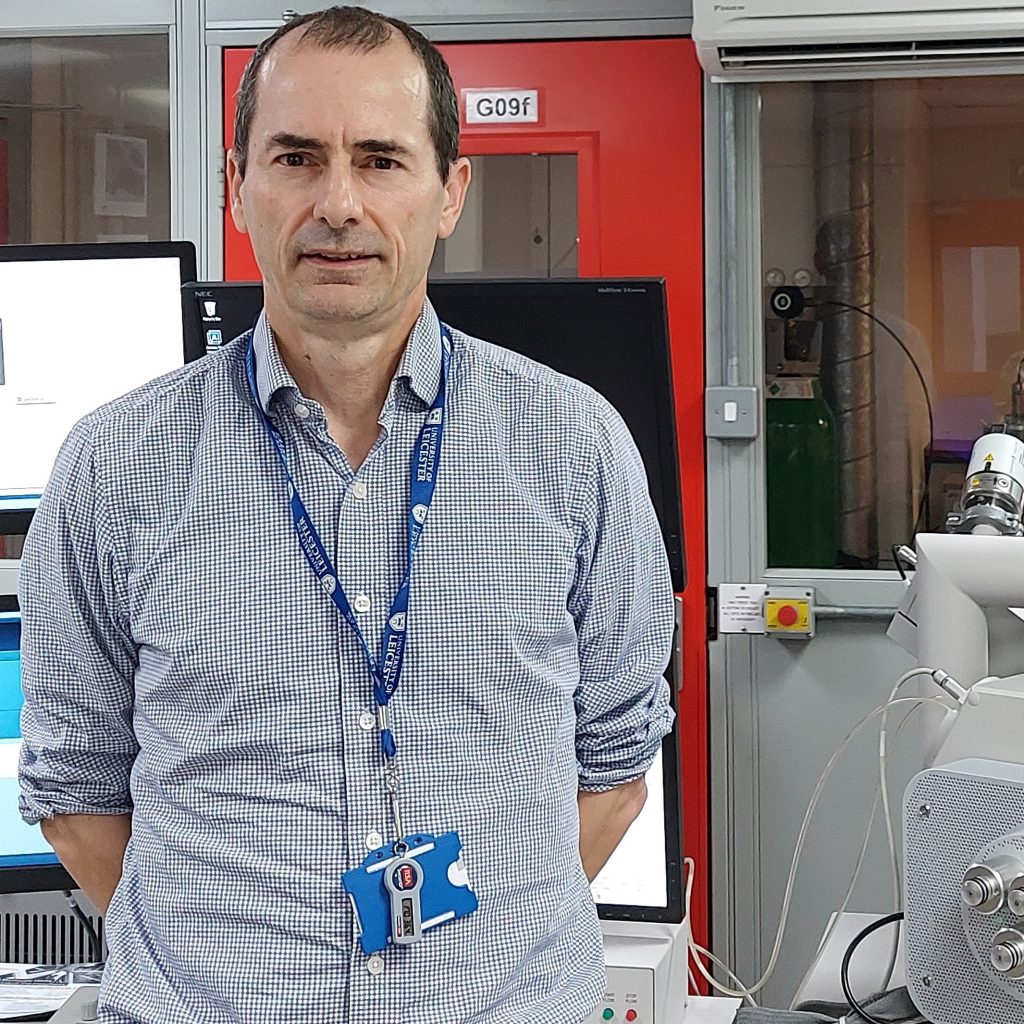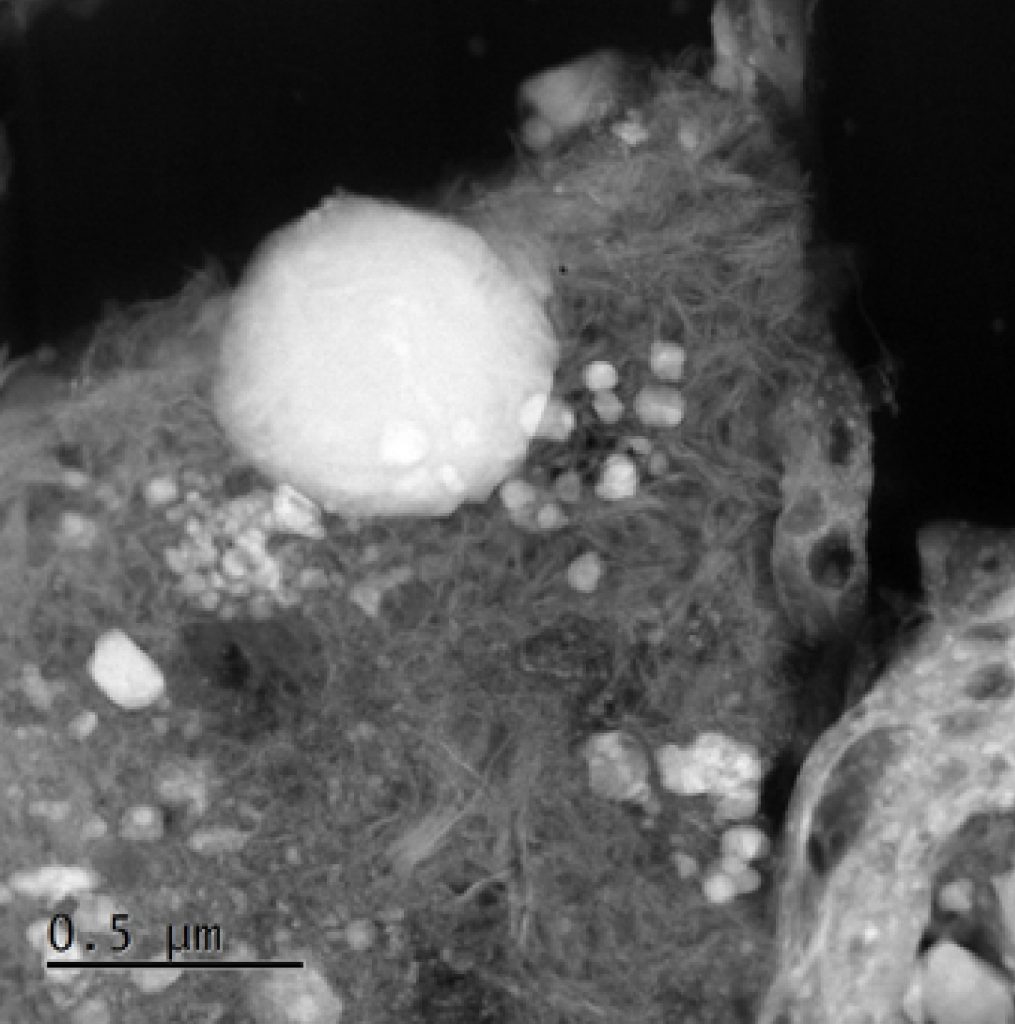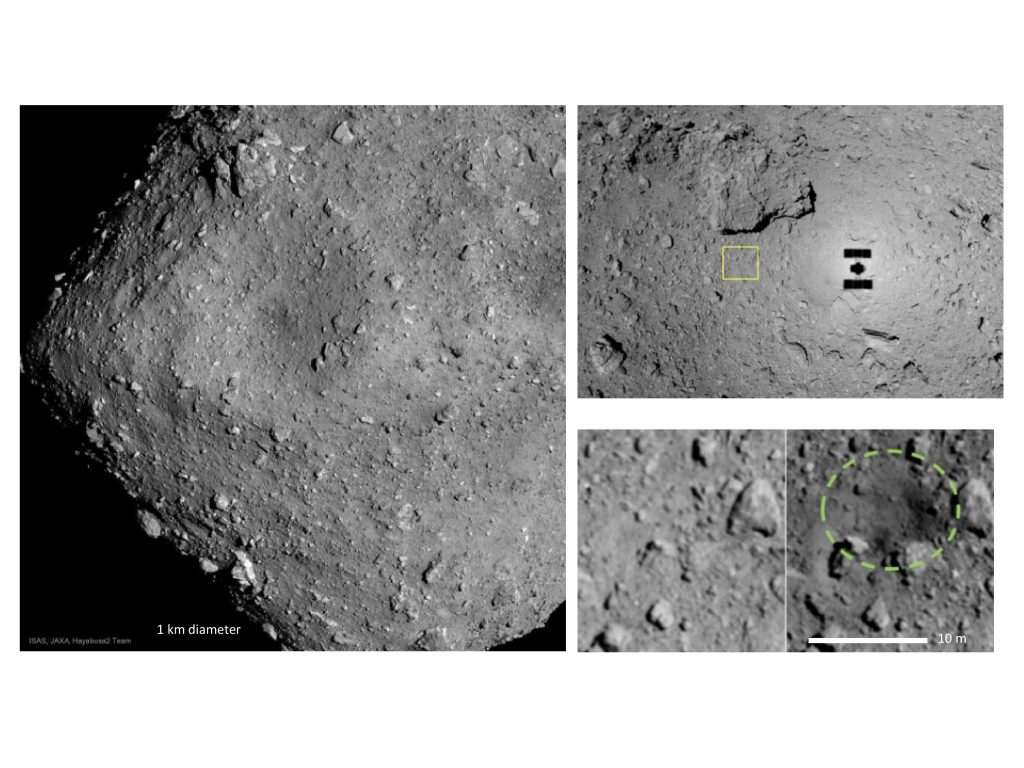Leicester scientists reveal new insights into the evolution of our solar system


Scientists in Leicester have been involved in a ground-breaking study of the most primitive building blocks of our solar system.
Researchers from the University of Leicester and Space Park Leicester have been examining fragments of the Ryugu asteroid which was brought back to earth in 2020 by the Japanese space state agency JAXA.
The asteroid fragment includes remnants of interactions between water, minerals and organics in our early solar system before the formation of Earth.
With the help of the UK’s national synchrotron facility, Diamond Light Source, the Leicester scientists discovered the asteroid’s dehydrated surface is likely to have been caused by space weathering which means asteroids that appear dry on the surface may actually be water-rich.
In the findings of their study, which is being published today in Nature Astronomy, they conclude this discovery could potentially require scientists to revise their understanding of the abundancies of asteroid types and the formation history of the asteroid belt.
One of the study’s authors, Professor John Bridges, of the University of Leicester’s School of Physics and Astronomy and Space Park Leicester, said: “This unique mission to gather samples from the most primitive, carbonaceous, building blocks of the solar system needs the world’s most detailed microscopy, and that’s why JAXA and the Fine Grained Mineralogy team wanted us to analyse samples at Diamond’s X-ray nanoprobe beamline and the associated electron microscopes.

“We’re thrilled to have helped to reveal the nature of space weathering on this asteroid.
“It’s important to build up experience in studying samples returned from asteroids because soon there will be new samples from other asteroid types, the Moon and within the next 10 years Mars, returned to Earth.
“The UK community will be able to perform some of the critical analyses due to our facilities at Diamond and the electron microscopes at Diamond’s electron Physical Science Imaging Centre.”
Diamond Principal Beamline Scientist for I14 at Diamond Julia Parker added: “It’s very exciting to be able to contribute to the understanding of these unique samples and to work with the team at Leicester to demonstrate how our techniques can benefit future sample return missions.”
Understanding the composition of asteroids can help explain how the early solar system developed and subsequently how the Earth formed.
They may even help explain how life on Earth came about, with asteroids believed to have delivered much of the planet’s water as well as organic compounds such as amino acids, which provide the fundamental building blocks from which all human life is constructed.
The information that is being gleaned from these tiny asteroid samples will help scientists to better understand the origin of the planets and stars and of life itself.
Researchers from the University of Leicester and Space Park Leicester have been examining fragments of the Ryugu asteroid which was brought back to earth in 2020 by the Japanese space state agency JAXA.
The asteroid fragment includes remnants of interactions between water, minerals and organics in our early solar system before the formation of Earth.
With the help of the UK’s national synchrotron facility, Diamond Light Source, the Leicester scientists discovered the asteroid’s dehydrated surface is likely to have been caused by space weathering which means asteroids that appear dry on the surface may actually be water-rich.
In the findings of their study, which is being published today in Nature Astronomy, they conclude this discovery could potentially require scientists to revise their understanding of the abundancies of asteroid types and the formation history of the asteroid belt.
One of the study’s authors, Professor John Bridges, of the University of Leicester’s School of Physics and Astronomy and Space Park Leicester, said: “This unique mission to gather samples from the most primitive, carbonaceous, building blocks of the solar system needs the world’s most detailed microscopy, and that’s why JAXA and the Fine Grained Mineralogy team wanted us to analyse samples at Diamond’s X-ray nanoprobe beamline and the associated electron microscopes.
“We’re thrilled to have helped to reveal the nature of space weathering on this asteroid.
“It’s important to build up experience in studying samples returned from asteroids because soon there will be new samples from other asteroid types, the Moon and within the next 10 years Mars, returned to Earth.
“The UK community will be able to perform some of the critical analyses due to our facilities at Diamond and the electron microscopes at Diamond’s electron Physical Science Imaging Centre.”
Diamond Principal Beamline Scientist for I14 at Diamond Julia Parker added: “It’s very exciting to be able to contribute to the understanding of these unique samples and to work with the team at Leicester to demonstrate how our techniques can benefit future sample return missions.”
Understanding the composition of asteroids can help explain how the early solar system developed and subsequently how the Earth formed.
They may even help explain how life on Earth came about, with asteroids believed to have delivered much of the planet’s water as well as organic compounds such as amino acids, which provide the fundamental building blocks from which all human life is constructed.
The information that is being gleaned from these tiny asteroid samples will help scientists to better understand the origin of the planets and stars and of life itself.


